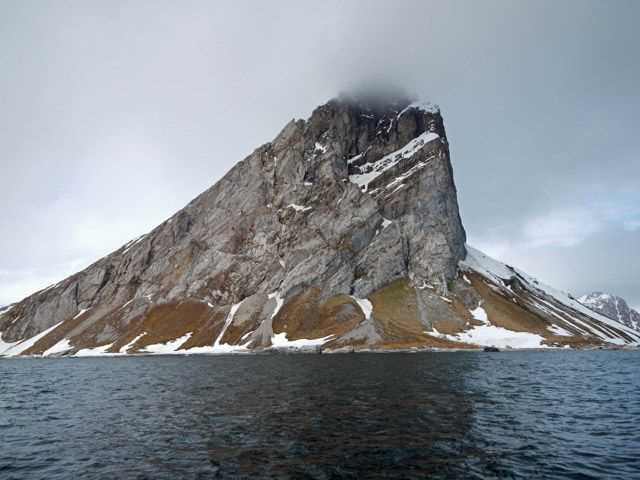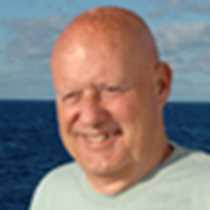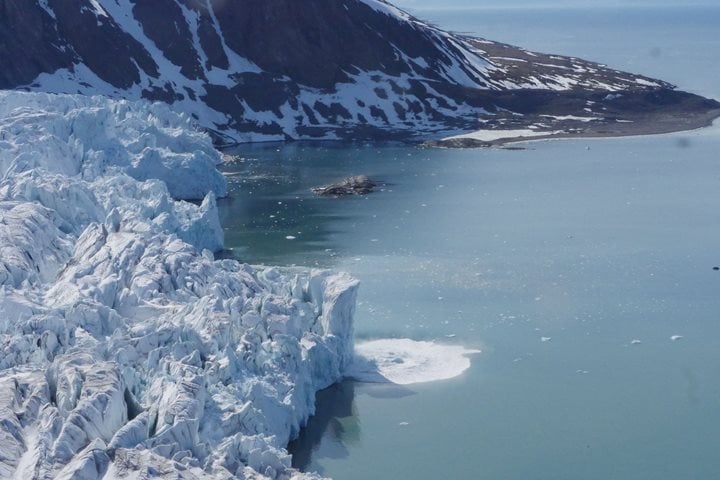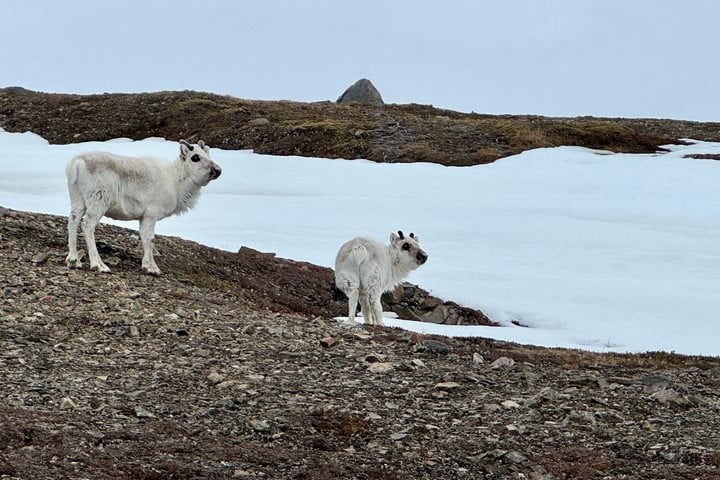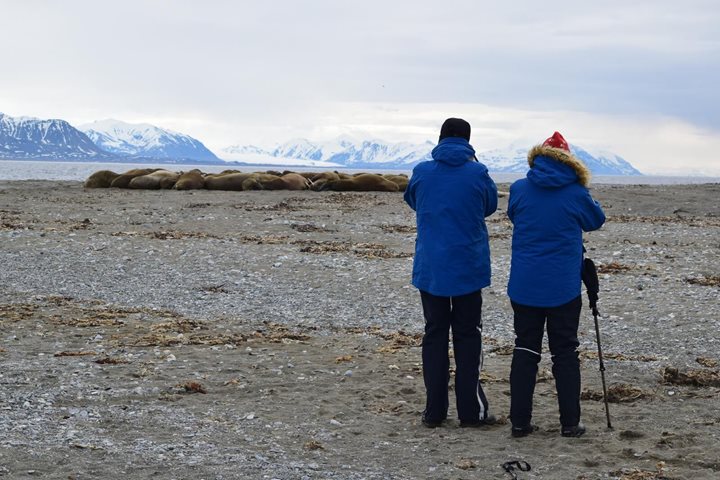Today we visited Hornsund, the southernmost fjord on the west coast of the island Spitzbergen in the Svalbard archipelago. We cruised deep into the fjord in the early morning and, because it was a bit windy in the main fjord, we proceeded south into another branch of Hornsund called Samarinvågen. As we approached the fast ice at the end of the fjord, we saw a polar bear walking on the fast ice, hunting for seal breathing holes. He walked slowly over the ice and occasionally lay down and rolled over to scratch his back. We were impressed by the lonely peripatetic life of a polar bear on the ice, living at the very edge of survivability with only his skill as a hunter and his incredible olfactory sense to ensure his success.
We watched him for quite a while before proceeding out of Samarinvågen and back into the main fjord. We soon turned north into another branch of Hornsund called Burger Bukta and cruised into a section called Austre Burger Bukta, the east branch. At the end of this fjord sit two very large glaciers. One is a tidewater glacier with its face continuing below sea level. The second glacier terminated at a large terminal moraine and the glacier itself was full of rock material that it accumulated along its passage through the tall mountains on both sides of the glacial valley. On the water at the face of the glacier we saw a pair of long-tailed ducks.
During lunch, we repositioned once again near where the two fjords split apart. This is a place where there is enough flat land that a trapper’s hut was built there around 1919 when trappers, including the famous Norwegian woman trapper, Wanny Wolstad, and her two young sons wintered there, trapping foxes and polar bears. The site sits beneath a huge cliff where thousands of black-legged kittiwakes nest and constantly call to one another. The place is called Gnålodden for the mountain above it, which is called Gnåberget or “mountain of incessant humming.” We were able to land at the hut and take walks to the bottom of the bird cliffs. We observed a couple of arctic fox hunting for eggs or chicks which may have fallen from the cliff nests. In the late afternoon, we sailed out of Hornsund and began to make our way north to the ice edge.

